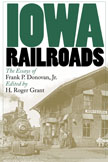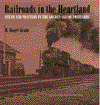Bonds of Enterprise
“This career narrative of John Murray Forbes, Boston China trader and western railroad builder, illuminates a pattern of eastern domination and local dependency in western railroad development…John Lauritz Larson analyzes the conflict between eastern financier-directors and local promoters, producers, and shippers in their shared pursuit of economic growth…[A] well-written, sophisticated study.”—Journal of American History
“For its meticulous scholarship and forceful, no-nonsense style, Bonds of Enterprise bids fair to become a classic in its field. For anyone who claims to be a railway historian, it is an absolute must.”—Business History Review
“John Larson has demonstrated that it is possible to develop new and original insights from well-known material. . . . A valuable analytical tool for those seeking to understand agrarian and local unrest in the period between the end of the Civil War and McKinley’s first administration.”—New England Quarterly
“A valuable insight into railroad development in the Midwest. . . . An excellent study which should be read by all interested in the development of business in America during the railway age.”—Journal of American Studies
“John Lauritz Larson has written a book of global reach, stretching from Canton, China, to Denver, Colorado.”—American Historical Review
Bonds of Enterprise uses the life of railroad entrepreneur John Murray Forbes to explore the shift from antebellum merchant capitalism to late ninetieth-century corporate capitalism, the rise of big business, technological innovations, farmer agitation for railroad rate control, and the process of government regulations. Forbes started off his business life as a China trader in the 1830s, returned to the States in time to surmount the Panic of 1837, and then—deciding that railroad construction should be based on existing settlement and traffic systems rather than speculative ambitions—became a master builder, beginning with the Michigan Central Railroad and ending with the Chicago, Burlington & Quincy system and the growth of Chicago as a railroad hub. Focusing on Forbes’s life allows Larson to elaborate on the contest of wills between eastern capitalists and midwestern boosters and the complex patterns of regional growth, particularly in Iowa, Illinois, Michigan, and Nebraska.





